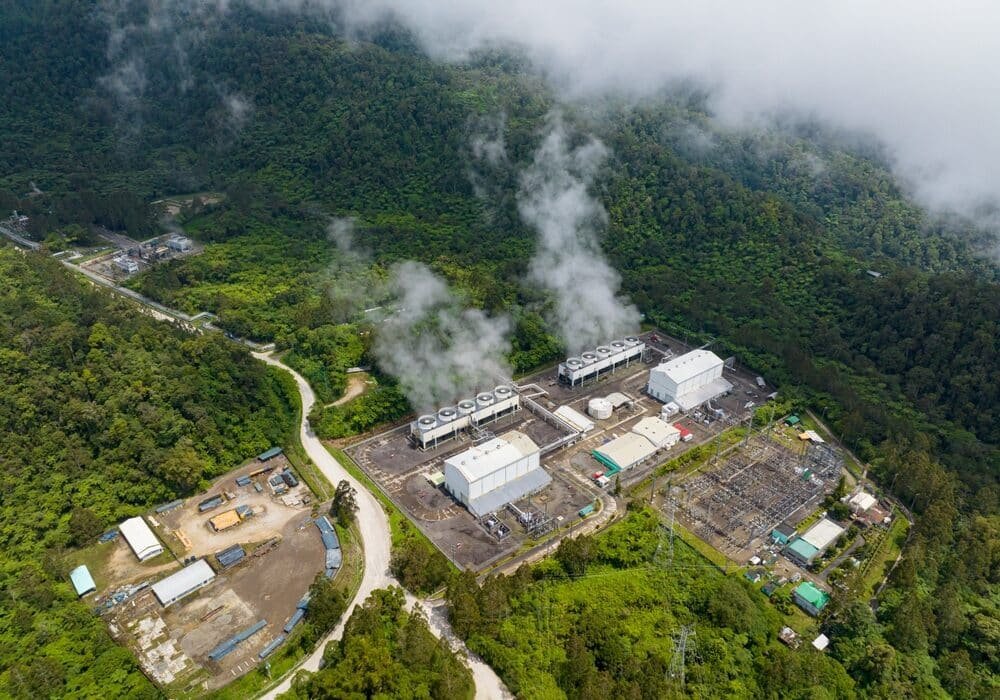Geothermal energy has been a reliable source of power for many countries. It is also considered sustainable and renewable, making it a promising alternative energy source for the future. Only a few nations in the world have access to abundant geothermal resources, and fortunately, the Philippines is among them. With its reserves ranking fifth in the world, the country has more than enough natural resources to truly harness the power of the earth’s heat.
In 2021, local geothermal energy experts wrote that the geothermal energy potential in the Philippines is estimated at 4,054 MW, half of which is yet to be developed. The Visayas region accounts for 49% of this capacity. Luzon follows with 45%, and Mindanao with 6%. More recent inventory efforts by the DOE point to 145 geothermal areas in the country, while only seven fields are in operation.
With all this potential in geothermal energy, It is high time for Filipinos to get to know the country’s most promising source of renewable energy.
What is Geothermal Energy?
Geothermal energy is thermal energy that is generated and stored in the rocks and fluids beneath the earth’s surface. When the earth’s internal heat – generated by radioactive decay leftover from the planet’s formation – comes into contact with water that has flowed into underground reservoirs, it produces steam that can break through the earth’s surface. The energy from this superheated water can be harnessed to produce electricity and heat for various purposes.
To produce electricity from geothermal energy, wells are dug into underground reservoirs to tap steam or hot water, which is then used to spin turbines connected to electric generators.
This is exactly what Filipino volcanologist Dr. Arturo Alcaraz did in 1967. He and his team lit an electric lightbulb using a 2.5 kilowatt (KW) generator powered by underground steam in 1967, bringing to light the geothermal energy potential of the Philippines. What exactly makes this tiny island nation a prime location for harnessing geothermal energy?
Groundbreaking Potential
The Philippines is situated within the “Ring of Fire,” a region in the Pacific Ocean known for its frequent volcanic and seismic activity. This geological feature creates ideal conditions for geothermal energy production as it provides access to hot rocks and underground steam, both necessary for generating electricity.
Aside from this, the country is a proven producer of geothermal energy. Since 1967, the Philippines has developed 7 geothermal fields that account for 16% of the country’s total electricity generation – a remarkable feat considering it was only from a handful of fields. The largest of these fields is located in Leyte, the birthplace of the country’s first geothermal “power plant”, the 3-MW Pilot Power Plant of National Power Corporation that supplied power to the Tongonan Geothermal Power Plant project site in 1977. The province is also home to one of the world’s largest geothermal facilities, the Malitbog Geothermal Power Station.
Losing Steam
In 2020, the Philippines produced 1.9 gigawatts of geothermal energy, making it the third leading producer in the world. However, the country used to be in second place, until Indonesia surpassed it in 2018. What happened?
“The development and utilization of geothermal energy slowed down since 2007 and only 86 MW was added in the total installed despite the enactment of Republic Act 9513 or the Renewable Energy Act of 2008,” DOE Undersecretary Rowena Cristina Guevara said during an event organized by the National Geothermal Association of the Philippines last September 2023.
The problem with harnessing geothermal energy is a worldwide issue rather than a uniquely Filipino challenge. Experts and opinion leaders alike bemoan the high costs of exploratory drilling and new technologies that hinder progress on geothermal energy. Drilling alone can cost millions of dollars. Additionally, there are concerns about potential environmental impacts and displacement of local communities.
Heating Back Up
The Philippines has been seeing an uptick in geothermal projects as of late. In the Visayas, two facilities are almost ready to become operational – the 28 MW Mahanagdong binary plant in Leyte and; the 5.6 MW Bago binary in Negros Occidental.
This is perhaps due to the Philippine government’s efforts to develop its geothermal resources in recent years. In 2020, Executive Order No. 116 directed government agencies to streamline permitting processes and fast-track geothermal development projects. Policies on foreign ownership of certain renewable energy resources have also been amended in late 2022. These moves are creating an energy investment climate that makes the country an attractive proposition for investors through an open and stable market for geothermal energy development.
Aside from geothermal projects currently in progress, Guevara said the country is doing pre-feasibility studies on projects that will offer an additional capacity of 381 MW. “Once we do these 381 MW, maybe we can be number two again,” the energy undersecretary said.
The Philippines undoubtedly has the potential to become a world leader in geothermal energy, with an abundance of natural resources and a strong commitment to sustainable development. With the right strategies and investments, plus the support of communities, the country can continue to harness this clean and renewable energy source, and ultimately become a powerhouse in geothermal energy production – a true leader in the fight against climate change.


